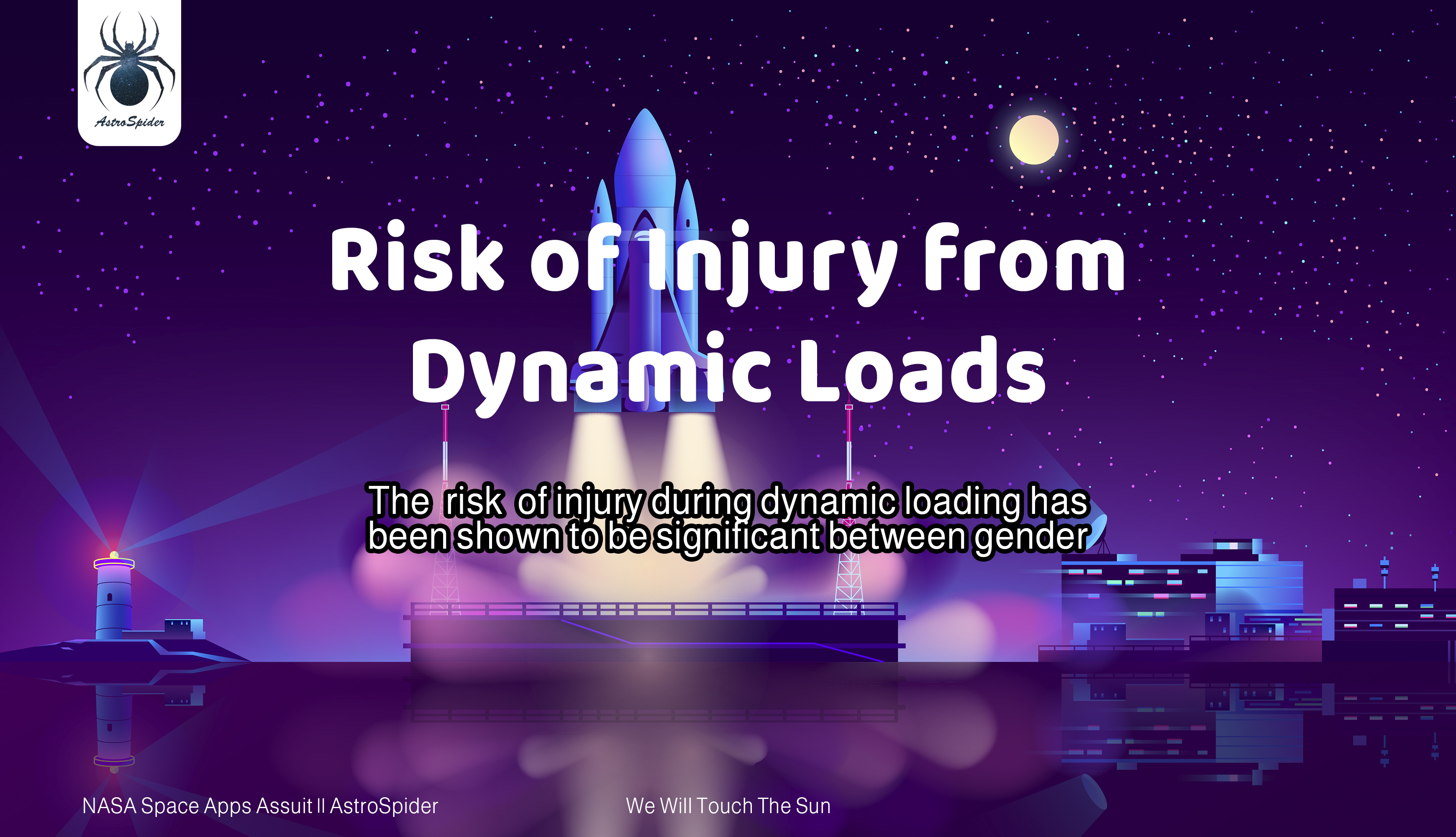
Risk of Injury from Dynamic Loads
Given the range of anticipated dynamic loads transferred to the crew of the vehicle, there is a possibility of loss of crew or crew injury during dynamic phases of flight.
Standards and vehicle design requirements are based on automotive and military environments and operational protocols; they are also partially tailored to the spaceflight environment. However, these do not adequately mitigate the risk of injury due to the unique spaceflight environment.
Current analytical tools are used outside of their validation conditions and have been shown to under predict Soyuz landing injury.
Injury due to standing during dynamic phases of flight is poorly documented in the literature and little data are available. Injury assessment reference values have not been validated due to limited load and injury data from Soyuz landings.
The risk of injury due to dynamic loads is well documented for automotive and military environments; however, there is less evidence available to ascertain the risk to crewmembers given the current vehicle design requirements.
The probability of an occurrence of dynamic loading in spaceflight is a stark departure from terrestrial vehicles. Typically, dynamic loads in terrestrial vehicles only occur during off-nominal or contingency scenarios, whereas dynamic loads are expected as part of the nominal operation of a spacecraft. In order to develop adequate standards and design requirements, acceptable risk limits for crewmembers must be defined to address this unique aspect of spaceflight. Currently an acceptable risk definition does not exist for Occupant Protection.
The NASA Standing Review Panel for the Occupant Protection risk, as well as various external expert panels have suggested defining acceptable risk and quantifying the current risk of injury to crews. The tasks for this gap will include updating NASA-STD-3001 with the definition of acceptable risk for Occupant Protection, and characterizing the injury risk associated with the Soyuz landing system.
Spaceflight deconditioning has been shown to cause decrements in bone and muscle. How these decrements translate to injury risk due to dynamic loads is unknown.
Currently deconditioning factors are used, but there is insufficient data available to assess the efficacy of these factors. Additionally, relative to exploration missions, new stressors will be faced, including radiation exposure and prolonged mission duration, and the potential additive or synergistic effects of these stressors also remain unknown.
Relevant efforts through other disciplines will likely yield data to help further characterize this gap; for an example, the one-year mission complement of studies is seeking to characterize bone and muscle loss throughout 60-day, 6 month, and 12-month missions, including assessments just prior to landing. The integration of these and other efforts into predictive models, relative to injury risk and dynamic loads, will help to inform vehicle design for future missions.
Suit life
support and basic functionality; HIDH includes observed metabolic rates and human factors; no suit-induced operational injury prevention or operations guidance. Training injury data available, but injury mechanisms and associated individual risk factors (sex, anthropometry, fitness, etc.) are not yet understood. Microgravity EVA performance is characterized, but the physiological and functional demands of planetary EVAs are not understood, outside of a limited number of Lunar and Mars sites, where humans and robotic landers have been.
The suits being designed for future missions will have the capability to operate at a variety of pressures, from a low pressure of 3.8 psi up to the 8.2 psi planned for use in the planetary vehicles/habitats.
The higher pressure ranges will enable shorter pre-breathe times and decrease the amount of time required for preparations prior to each EVA. However, the pressure at which EVA suits operate affects the resistance experienced by crewmembers at individual joints, and can increase work load, with quicker onset of fatigue and possibly overuse as well as acute injuries, which can ultimately affect health and performance outcomes. Lower suit pressures are easier to operate in, but increase the risk of decompression sickness (DCS).
Understanding the trade-offs between suit pressure, work-loads, and health and human performance outcomes such as fatigue and injuries will inform the selection of optimal suit operating pressures to be used during EVAs, as well as the design of EVA concepts of operation, and the development of countermeasures as needed.